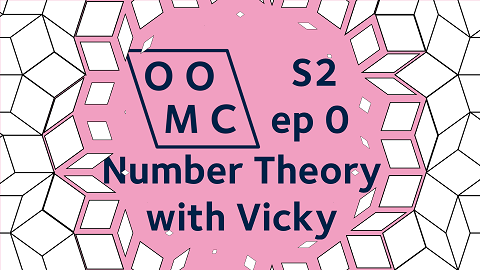Season 2 Episode 0

We're back for season 2, kicking things off with some Number Theory in this episode with Dr Vicky Neale. Vicky has some numbers and some pictures of squares. Can you work out the relationship between the numbers and the squares?
Further Reading
Euclid’s Algorithm
The Picture This interactive website is at https://nrich.maths.org/psum/picture-this/.
You can see a photo of Vicky’s Knitted Euclid Algorithm on her craft page at https://people.maths.ox.ac.uk/neale/Craft.html. Vicky has lots of other craft projects that I like on that page, including crochet multiplication tables for modular arithmetic!
Squaring the square
Seeing all of these squares of different sizes reminded me of a problem called Squaring the Square.
The idea is to find a square with integer side-length that can be tiled with smaller squares of smaller sizes (all different sizes, if you can!). This is not quite the same as the diagrams Vicky makes with Euclid’s algorithm, because in this problem you’re not required to start with a big square that takes up all of one of the sides. The Wikipedia page I’ve linked to above has an example with 55 different small squares of different sizes, which was found (amazingly) by converting the problem into a theoretical electrical circuit and applying Kirchoff’s circuit laws.
Twisting and Turning
For another interesting problem hosted on the NRICH website, see Twisting and Turning, based on a trick invented by John Conway. Four people are holding two skipping ropes, with two "operations" that they can perform (twist/turn). Performing the operations tangles the ropes; can you work out how to untangle them?
Continued Fractions
There was some discussion in the chat about something called “continued fractions”, and whether there might be some link. We haven’t talked about continued fractions on the livestream before, so this is a good chance to introduce them!
Continued fractions look like this
$$ a+\frac{1}{b+\frac{1}{c+\frac{1}{\dots}}}$$
This series of 1+1/(stuff) might stop after a few terms, or it might go on forever. Given any number, we can write it in continued fraction form. There is lots more information about how to do this (and why we might want to do this!) at http://www.maths.surrey.ac.uk/hosted-sites/R.Knott/Fibonacci/cfINTRO.html#section2
Curve sketching
$$y=\frac{1}{1+x^2}, \quad y=\frac{1}{1+x^3}, \quad y=\frac{1}{1+x^4}.$$
These three are variations on a theme – what do they have in common, and what’s different?
If you want to get in touch with us about any of the mathematics in the video or the further reading, feel free to email us on oomc [at] maths.ox.ac.uk.

